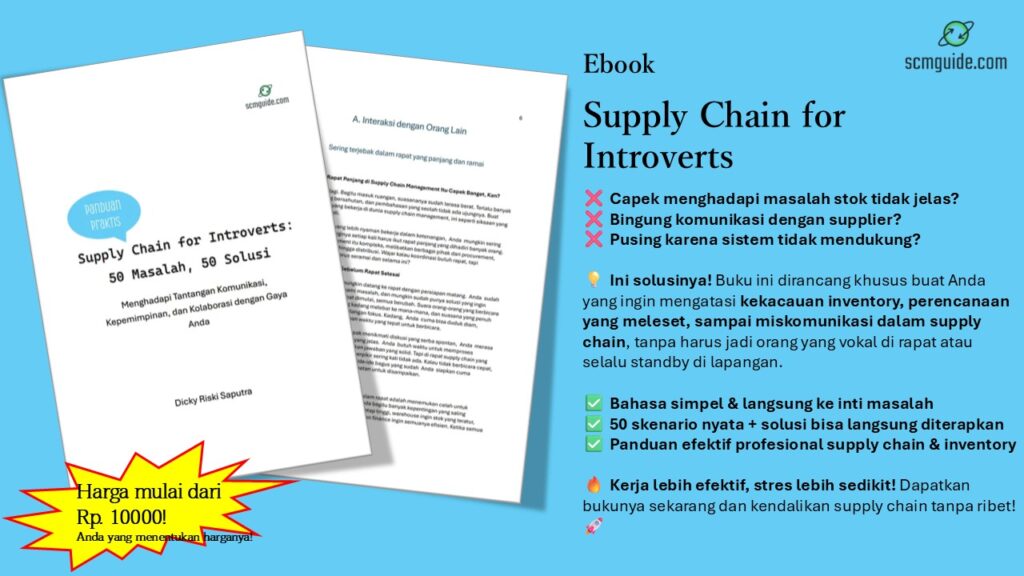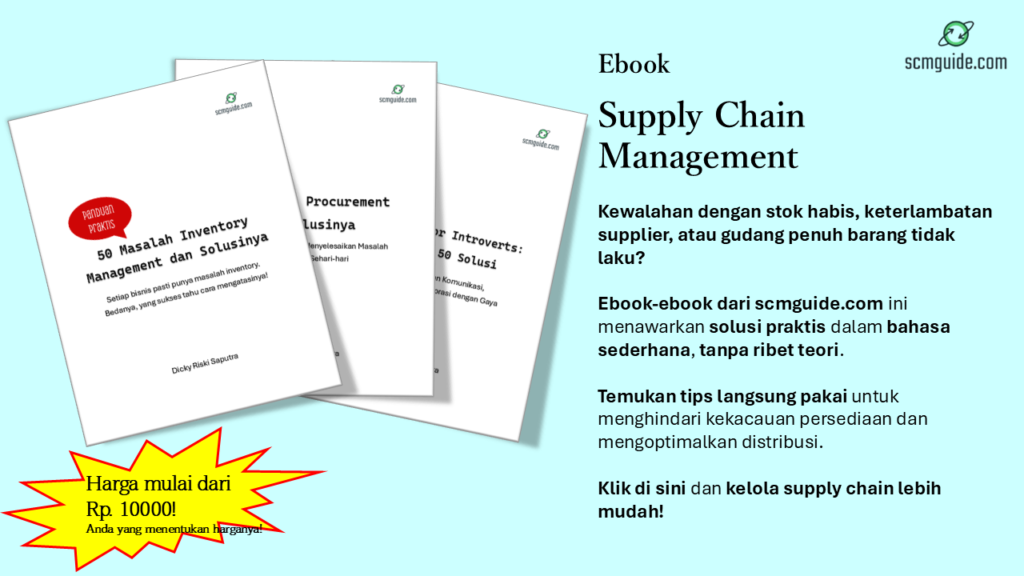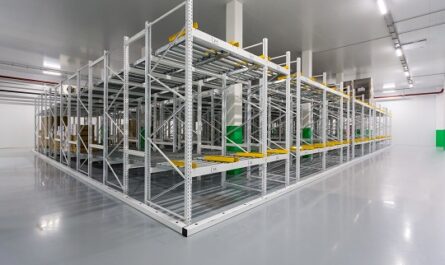In the fast-paced world of supply chain management, the allure of new technology is hard to resist. The promise of revolutionizing operations, boosting efficiency, and staying ahead of the competition can create a sense of urgency—often fueled by the fear of missing out (FOMO). However, adopting technology without a well-thought-out plan can lead to wasted resources, operational disruptions, and security vulnerabilities.
Let’s dive into how businesses can navigate the temptation of FOMO, evaluate their technology needs strategically, and lay the groundwork for meaningful, long-term benefits.
Before we go further into this topic, don’t forget to follow my LinkedIn account. You’ll get more helpful insights on supply chain management there.
Table of Contents
The Hidden Risks of Acting on FOMO
In today’s digital age, innovations in supply chain technology come fast and furious. From AI-driven demand forecasting to blockchain for enhanced traceability, it’s easy to feel that every new development is essential. But reacting impulsively can backfire. Here’s why:
Wasted Resources
Jumping on the latest tech trend without understanding your unique requirements can be expensive. A poorly chosen system may require substantial investment in terms of money, time, and human resources—only to yield little or no return.
Operational Disruptions
Introducing a new technology often requires changes to established workflows. If these changes are not planned and communicated effectively, they can slow down productivity instead of improving it.
Security Risks
Every addition to your IT infrastructure can introduce potential vulnerabilities. Without proper evaluation and integration, new systems may create openings for cyberattacks, jeopardizing sensitive data and operations.
Why Technology Adoption Requires a Strategic Approach
Avoiding the pitfalls of FOMO starts with shifting your mindset. Instead of asking, “What are others adopting?” focus on “What does my business need?” This subtle shift ensures that technology serves as an enabler rather than a distraction.
Conducting a Thorough Needs Assessment
The first step in any technology adoption strategy is understanding your starting point. Here’s how to frame this assessment:
- Identify Pain Points
Map out the challenges across your supply chain. Are there delays in order fulfillment? Is inventory tracking unreliable? Pinpointing these issues ensures you’re not adopting technology for the sake of it. - Set Clear Objectives
Be explicit about what you want to achieve. For example, if reducing lead times is a priority, look for solutions that specifically address this goal. - Evaluate Your Current Infrastructure
Before investing in new systems, assess the tools you already have. Sometimes, optimizing existing technologies can yield better results than starting anew.
You might also like:
- The Hidden Risks of System Automation in Supply Chain Management
- How to Present Data in Supply Chain: Don’t Add Complexity
Evaluating Technology Options
Once you’ve outlined your needs, it’s time to research and compare potential solutions. A few key considerations include:
- Alignment with Strategy
Ensure the technology supports your broader business goals. A flashy solution that doesn’t fit your strategy will only create disconnects. - Scalability and Flexibility
Supply chains evolve. Invest in technology that can grow with your business rather than one that limits future possibilities. - Cost-Effectiveness
Look beyond upfront costs to consider ongoing expenses, including maintenance, upgrades, and training. A cheaper option isn’t always the most cost-effective in the long run. - Ease of Integration
Select tools that work seamlessly with your existing systems. Poor integration can lead to inefficiencies and data silos. - Security and Compliance
Choose solutions that meet industry standards for data protection. This not only safeguards your operations but also ensures compliance with regulations.
Prioritizing and Phasing Implementation
Even with the right technology, trying to overhaul your systems all at once can be overwhelming. Instead, break down the process:
- Prioritize Initiatives
Focus on projects with the highest potential to deliver value. Start with solutions that address critical pain points or yield quick wins. - Phase Rollouts
Test new systems in smaller, controlled environments before scaling up. This reduces the risk of widespread disruption and allows for adjustments.
Building a Foundation for Success
Adopting technology isn’t just about the tools—it’s about creating the right environment for those tools to succeed. Businesses that focus on preparation, data, and people management will see the greatest returns.
Emphasizing Data-Driven Decisions
Technology is only as effective as the data driving it. Use analytics to uncover patterns, predict demand, and measure performance. High-quality data ensures that every technological decision is backed by evidence rather than intuition.
Strengthening IT Infrastructure
A solid IT foundation is essential for any digital transformation. This includes ensuring that:
- Networks are fast and reliable.
- Hardware is up-to-date.
- Security protocols are robust.
When the infrastructure is strong, new technologies can be implemented more smoothly and securely.
Adopting Effective Change Management Practices
Change is hard—especially in supply chain operations where processes are often deeply ingrained. Here’s how to ease the transition:
- Engage Stakeholders Early
Include team members from various departments in the planning process. Their insights can highlight potential challenges and foster a sense of ownership. - Provide Training and Support
No matter how intuitive a system claims to be, training is non-negotiable. Equip your team with the skills they need to use the technology effectively. - Communicate the Vision
Help employees understand why the change is happening and how it benefits them. Transparency reduces resistance and builds trust.
You might also like:
- PPIC: The Common Enemy in the World of Manufacturing
- What Repeated Mistakes in Supply Chain Management Can Teach Us
Real-World Examples of Strategic Technology Adoption
To better illustrate the principles outlined above, let’s consider a couple of real-world scenarios:
Case 1: Avoiding Wasted Resources
A manufacturing company jumped into adopting an AI-driven inventory system without first assessing its existing processes. The system clashed with their outdated ERP software, leading to costly delays and a complete reversion to their old methods.
Contrast this with another company that conducted a needs assessment, upgraded their ERP, and then implemented AI. The integration was seamless, and the ROI was significant.
Case 2: Phased Implementation Success
A logistics firm wanted to implement blockchain for supply chain traceability. Instead of launching it across their entire network, they started with a single product line. This allowed them to test the system, train employees, and fine-tune processes before expanding.
The Benefits of a Strategic Approach
When businesses resist the urge to act on FOMO and take a strategic approach, the rewards can be substantial:
- Increased Efficiency
The right technology streamlines processes, reduces errors, and speeds up operations. - Improved ROI
Thoughtful investments ensure that resources are used wisely, maximizing returns. - Enhanced Agility
Scalable and flexible systems enable businesses to adapt to changing market conditions quickly. - Stronger Security
Careful evaluation minimizes vulnerabilities, protecting sensitive data and operations.
Final Thoughts: Balancing Innovation with Caution
The fear of missing out is natural, especially in a competitive industry like supply chain management. But chasing trends without a plan often leads to disappointment. By focusing on your unique needs, evaluating options carefully, and prioritizing thoughtful implementation, you can harness technology’s power without falling victim to its pitfalls.
Remember, it’s not about adopting every new tool—it’s about adopting the right ones. By doing so, you’ll position your business for sustainable growth, innovation, and success.
I hope you find it helpful!
Please share this article with your colleagues so they can also benefit. For more insights on supply chain management, follow my LinkedIn account. You’re free to use all articles on this blog for any purpose, even for commercial use, without needing to give credit.

 by
by 



